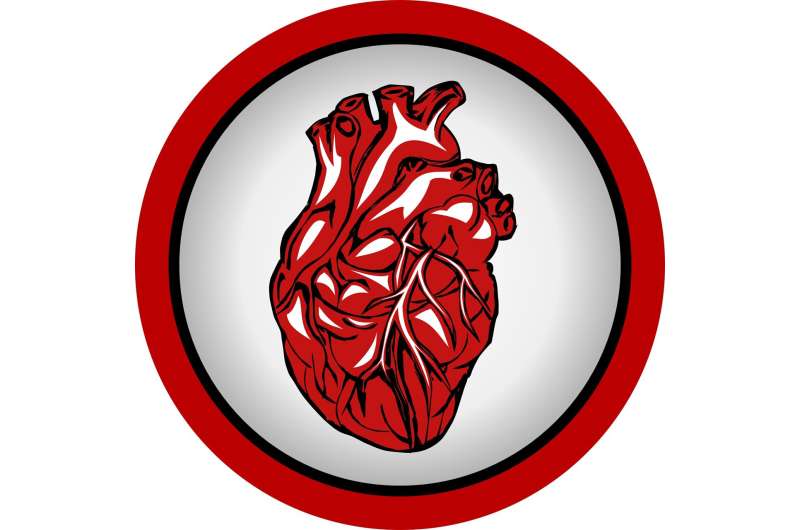
Undergoing percutaneous coronary intervention (PCI) for narrowed arteries with a novel bioadaptor is at least as effective as a contemporary drug-eluting stent (DES) with regard to target lesion and target vessel failure outcomes at one year in a large, broad clinical population. This late breaking research was presented in a Hot Line session Sept. 2 at this year’s ESC Congress 2024.
Additional pre-specified landmark analyses show that the bioadaptor also offers sustained, statistically significant very low event rates across all major clinical endpoints, demonstrating an advantage over DES from six months to one year.
“INFINITY-SWEDEHEART is the largest, most rigorous trial of the bioadaptor to date,” said lead author Professor David Erlinge from Lund University in Sweden. “The results confirm the novel impact of the bioadaptor in coronary artery disease treatment through its unique design and mechanism of action of restoring the physiology of a diseased artery in a population representative of everyday clinical practice.”
The drug-eluting bioadaptor is the first coronary implant technology with the same qualities as a modern DES at implantation, but with the unique mechanism of unlocking the bioadaptor frame after polymer resorption over six months, “uncaging” the vessel while maintaining essential dynamic support to the vessel to restore its normal hemodynamic modulation (blood flow) function.
Every year, millions of people around the world undergo PCI, a non-surgical intervention to treat blockages in the arteries that supply blood to the heart. DES are the mainstay of coronary artery disease (CAD) treatment, providing an immediate scaffold to reduce the risk of restenosis (re-narrowing of the treated artery and recurrence of symptoms that requires additional repair).
While PCI with DES is highly effective, stent related adverse events continue to accrue after the first year at a rate of 2%–3% a year, with no difference between second-generation DES, first-generation DES and bare metal stents. Similarly, the attempted “leave nothing behind” concept of Bioresorbable Scaffolds failed at improving short and long-term outcomes compared to DES, due to poor acute performance and loss of long-term vessel dynamic support following scaffold resorption.
Previous studies have demonstrated the bioadaptor’s ability to restore a diseased artery’s viability, including maintaining the flow, and restoration of hemodynamic modulation of the artery by improving pulsatility, compliance, and increased blood flow volume and plaque volume stabilization and regression compared to contemporary DES.
The recent BIOADAPTOR-RCT demonstrated a significant reduction in adverse clinical outcomes and target lesion failure of bioadaptor compared to a contemporary DES (Resolute Onyx) over two years in patients with previously untreated coronary artery lesions.
The INFINITY SWEDEHEART trial set out to evaluate the safety and efficacy of the bioadaptor compared to the DES in a broader patient population representative of every day clinical practice, including a large proportion of Acute Coronary Syndrome (ACS) patients, from 20 sites across Sweden.
The trial enrolled 2,400 patients (aged between 18 and 85 years) requiring PCI who had previously untreated Chronic Coronary Syndrome (CCS) or ACS and had achieved a successful target vessel pre-dilation. Patients were randomized in a 1:1 ratio to either bioadaptor (1,201 patients; average age 68 years; 24% female) or DES (1,198 patients; average age 68 years; 24% female).
The main (primary) endpoint was the target lesion failure (TLF) rate, defined as a composite of cardiovascular death, target vessel myocardial infarction (TV-MI) and ischemia-driven target lesion revascularization (ID-TLR), at one year.
At one year, there was an 18% reduction in the TLF rate of the bioadaptor compared to DES (2.35% vs. 2.77%), demonstrating non-inferiority (p
The one-year results also demonstrated a 14% reduction in the target vessel failure (TVF) rate (3.03% vs. 3.52%) with the bioadaptor compared to DES.
Further prespecified powered landmark analyses showed a significant reduction and plateau in TLF (0.2% vs. 1.3%, p=0.003) and TVF (0.6% vs. 1.8%, p=0.008) events after six months, when the bioadaptor’s mechanism of action is enabled, driven by a favorable reduction in CV death, TV-MI, and ischemia-driven TLR with the bioadaptor compared to DES.
“INFINITY-SWEDEHEART is the largest randomized controlled trial to confirm consistency of low and plateauing adverse event rates compared to DES after the uncaging of the bioadaptor at six months. This opens up the opportunity to reduce long-term complications for the large number of patients treated with PCI, ” said Professor Erlinge.
Citation:
Trial finds coronary bioadaptor offers a significant reduction in adverse clinical events (2024, September 3)
retrieved 3 September 2024
from https://medicalxpress.com/news/2024-09-trial-coronary-bioadaptor-significant-reduction.html
This document is subject to copyright. Apart from any fair dealing for the purpose of private study or research, no
part may be reproduced without the written permission. The content is provided for information purposes only.

